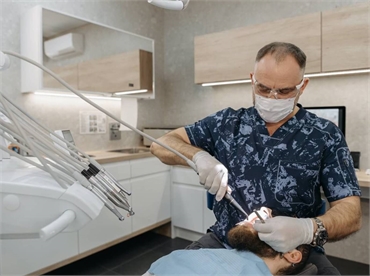Application of Digital Technology in Oral Health Care
June 27, 2022



Getting Your Teeth into Technology
Dental technology advancements have made visits to the dentist more efficient and pleasurable for patients. Just as technology has altered our homes, workplaces, and even relationships, new advances have changed how people perceive going to the dentist. Technology is transforming some of dentistry's most burdensome duties, streamlining the process for the benefit of all parties involved.
Modern dentistry welcomes exciting new technological breakthroughs for improved patient comfort, treatment, and convenience. This is especially the case for a technology that has passed decentralized clinical trials. Here are a few ways that new technology has benefited your oral health, whether utilized at home or at your dentist's office.
Dental Implants
Dentures and bridges were once the sole options for people who had lost their teeth. However, thanks to technological advancements, patients can now get dental implants that give a better basis for permanent or removable replacement teeth. Dental implants are artificial tooth roots. They have several advantages over dentures and bridges, including better look, speech, comfort, and oral health. They are also more durable, convenient, and make it easy to eat.
Laser Treatment
Lasers are currently employed for diagnosis as well as treatment. For example, dentists are presently using "soft tissue lasers" for minor gum surgery, but in the future, these treatments may be delegated to computers. "Hard-tissue lasers" could eventually replace high-speed dental drills, eradicating tooth decay with the help of tiny, digitally-controlled mirrors. However, the high cost of these gadgets will have to be reduced before they can be extensively used.
Digital X-Rays
Digital X-rays, which use an electronic sensor to do considerably faster imaging than traditional X-rays, are essential in spotting regions of bone loss and dental decay. In addition, the larger, clearer images can be instrumental in recognizing difficulties and guiding how a process is carried out.
Digital Imaging
In today's world, video and photography in the medical sector are commonplace. The intraoral camera is one of the most valuable tools in a dental office. Intraoral cameras are used to examine teeth and mouth areas that are otherwise difficult to visualize. Intraoral photography has advanced significantly over the years. Today's photographs provide precise, detailed tools for dentists to treat you. However, intraoral photography isn't just for dentists. The images from intraoral cameras can show the dentist a patient's needs while educating the patient about their oral health–all in rich color.
Fluorescence imaging can assist dental professionals in detecting abnormalities and symptoms of cancer that would otherwise be invisible to the naked eye. Diseases detected early using these technologies can be treated sooner, providing the patient with a better prognosis and a shorter recovery. A recent assessment reveals that this new instrument can detect tumors and other possibly cancerous conditions.
Digital Diagnostics
Teledentistry in today's dental healthcare industry has the potential to usher in a new era of oral well-being. Patients suffering from bruxism, for example, may not realize they are grinding their teeth at night, resulting in undesirable symptoms such as jaw pain and fractured teeth. It can be challenging to construct a picture of this problem without being able to show them what is happening. This is where teledentistry and technology may help. Patients who grind their teeth can use a gadget implanted in their temporalis muscle and record their sleeping behaviors overnight. The data is delivered back to an app, where the patient and clinician can easily view it.
Oral technology is continually advancing, and dental health professionals that use scientifically tested and validated developments in their industry may be able to provide the most outstanding care. In addition, digital dentistry is continuously presenting dental practitioners with new solutions to treat you in ways that are faster, safer, more comfortable, and more reliable than ever before.
Living in these inventive technological times has benefited almost every part of our life. Technology continues to improve our quality of life, from communications to our friendly Alexa home AI devices. With each discovery, dentists have been delighted to employ new tools and ideas to improve dental care. As a result, we can all expect science and dentists to assist us in achieving a healthy grin.

